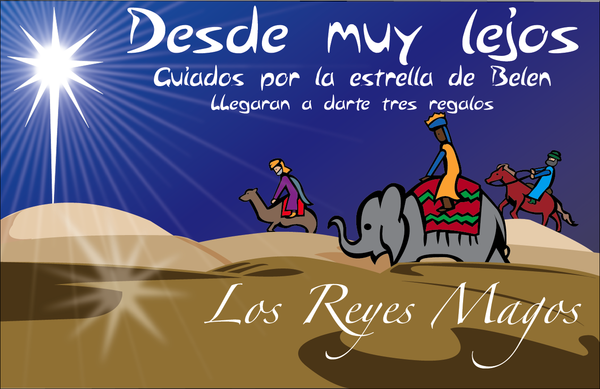‘After Jesus was born in Bethlehem in Judea, during the time of King Herod, Magi from the east came to Jerusalem and asked, ‘Where is the one who has been born King of the Jews? We saw his star in the east and have come to worship him…When King Herod heard this he was disturbed…Then Herod called the Magi secretly and found out from them the exact time the star had appeared. He sent them to Bethlehem and said, Go and make a careful search for the child. As soon as you find him, report to me, so that I too may go and worship him… After they had heard the king, they went on their way. On coming to the house, they saw the child with his mother Mary, and they bowed down and worshiped him. Then they opened their treasures and presented him with gifts of gold and of incense and of myrrh. And having been warned in a dream not to go back to Herod, they returned to their country by another route’
Matthew 2:1-12
Today, on January 6, most Christian countries celebrate the Day of The Three Kings. It is probably the biggest day in Spain to celebrate the birth of Baby Jesus. Children get presents and their families gather to have special food and wine. This festivity is also celebrated in Mexico. People invite their close friends and eat la rosca (homemade sweet bread that has the shape of a big donut). Each guest gets a knife and cuts a portion of the bread. In one of its sides, there is a hidden small Baby Jesus doll. The person who finds it has to host a party on February 2nd to commemorate Candelaria Virgin.
Venezuelans don’t get left behind. In various states of the country, families also commemorate this day. On the night before Three Kings Day, children place their shoes by the door of their bedrooms in hope of waking to find presents and sweets inside them. If they don’t behave, they would get coal instead.
According to the Bible, the Wise Men (Melchior, Gaspar y Balthasar), following the star found Maria and Joseph on the day of the birth of Baby Jesus. They brought gifts to the baby, which symbolise wealth. That is why many people like celebrating them, so at the beginning of the year their homes shall be full of love and peace. They are also considered the guardians of children.
An interesting historical fact is that the celebration of the Day of the Wise Men is 2000 years old. In contrast with the story of Santa Claus, that has been known since the XIX century.
In Merida, Venezuela, the locals worship the Three Wise Men. In a little village called Mocao close to the important Andes town of Mucuchíes, people do a large parade, led by the Wise Men who come down from the Andes Mountains. It is a fusion of Christian and pagan celebration.
By Carla Soto
Image – source: http://topnavidad.com/1891/postales-de-bajada-de-reyes/
